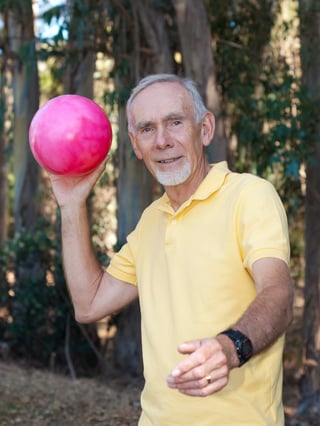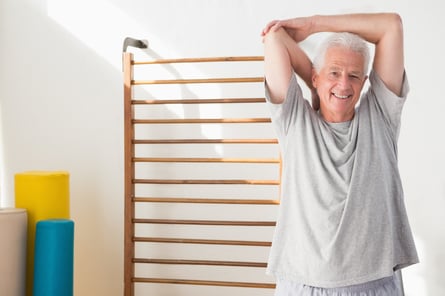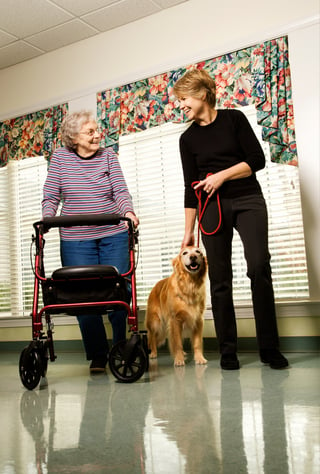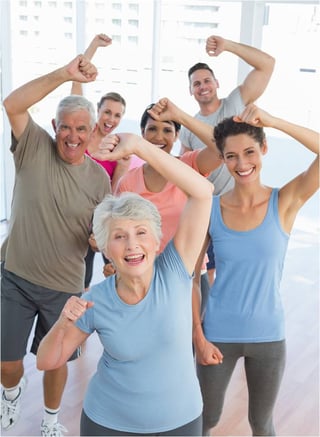In my first, second, and third blogs of the series, I went over five of my guidelines to being successful in senior fitness:
- Muscle-Activation Exercises
- Simplistic Exercises
- Compound, Multi-joint, Closed-chain Movements
- Grip Exercises
- Mobility Work
Don't Change Exercises; Change the Intangibles and Variables of the Exercise
 Certain exercises, such as the sit-to-stand and the seated row, should always be performed in one's routine. Certain experts recommend that one would eventually replace these exercises with a new one. The reasoning behind this is that it is believed that over time the muscles will grow accustomed to certain exercises and the effect will be lost. While this is slightly true, it's not true because of the exercise itself, but rather the variables of the exercise, such as the sets, reps, rest periods, tempo, etc.
Certain exercises, such as the sit-to-stand and the seated row, should always be performed in one's routine. Certain experts recommend that one would eventually replace these exercises with a new one. The reasoning behind this is that it is believed that over time the muscles will grow accustomed to certain exercises and the effect will be lost. While this is slightly true, it's not true because of the exercise itself, but rather the variables of the exercise, such as the sets, reps, rest periods, tempo, etc.
By changing these variables, the CCRC resdient client will always have results and will continue to perform exercises that work the entire body in unison, such as the exercises in the preceding blogs. As a result, they will increase their performance in the daily activities of life.
After all, the more something is changed, the less that person will be good at it. If you want to get good at throwing a ball, you spend your time throwing a ball and not catching a ball. Well, the concept is the same with exercise. Constantly changing the exercises on someone will possibly give them results, but the question isn’t, "Is this person getting results?" Rather, the question is, "Is this the best way to do it?"
So, constantly changing the exercises may elicit a result, but we are looking for the best results; therefore, mastering and being consistent with basic, compound, multi-joint, closed-chain movements will help gain strength, increase lean muscle weight, increase mobility, work the body in unison, increase neurological activation, and lead to greater overall success.



 lunch, walking down the hallway, or picking up groceries, multiple muscles are being used through the range of motion of multiple joints. That’s why the compound, multi-joint, closed-chain movements are so much more effective than isolation, single-joint, open-chain movements.
lunch, walking down the hallway, or picking up groceries, multiple muscles are being used through the range of motion of multiple joints. That’s why the compound, multi-joint, closed-chain movements are so much more effective than isolation, single-joint, open-chain movements. 
 Exercise, as we know, is an essential part of living a healthy life—not only for the elderly, but for everyone. One common question I get is, “What exercises should I do?” Now, this is a loaded question. That’s going to depend on things like goal, fitness level, capability, and injury. But for the most part, I recommend that everyone follow basic guidelines for success when it comes to their fitness. Over the course of this blog, I discuss two of my guidelines for fitness. Not everyone is the same; therefore, one size doesn't fit all. But we are all humans, so one size does fit most.
Exercise, as we know, is an essential part of living a healthy life—not only for the elderly, but for everyone. One common question I get is, “What exercises should I do?” Now, this is a loaded question. That’s going to depend on things like goal, fitness level, capability, and injury. But for the most part, I recommend that everyone follow basic guidelines for success when it comes to their fitness. Over the course of this blog, I discuss two of my guidelines for fitness. Not everyone is the same; therefore, one size doesn't fit all. But we are all humans, so one size does fit most.